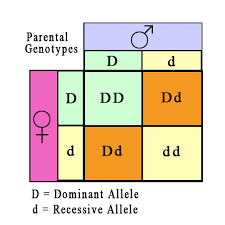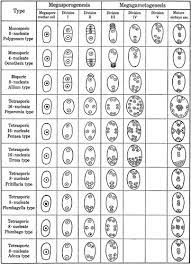DISCOVERY OF PHYTOHORMONES-AUXIN, GIBBERILIN, CYTOKININ
DISCOVERY OF PHYTOHORMONES-AUXIN, GIBBERILIN, CYTOKININ
AUXIN
|
S.NO |
SCIENTISTS |
YEAR OF
IDENTIFICATION |
DISCOVERY |
|
1 |
Charles
Darwin |
1880 |
The unilateral
growth and curvature of Canary grass
(Phalaris canariensis) coleoptile to light. |
|
2 |
F. W. Went |
1926 |
The term
auxin (Greek: Auxin – to Grow) was
first used by him . |
|
3 |
F. W. Went |
1928 |
Avena
curvature test – he using Oats (Avena) coleoptile and isolated the auxin. |
|
4 |
F. W. Went |
1928 |
He collected
auxin in agar jelly. |
|
5 |
Kogl and
Haugen Smith |
(1931) |
He isolated
Auxin from human urine, and called it as Auxin A. |
|
6 |
Kogl and
Haugen Smith |
1934 |
An active substances was isolated from corn grain oil and
was named as Auxin B. |
|
7 |
Kogl et al.,and
Thimann |
1934 |
He found
heteroauxin in the plant and chemically called it as
Indole-3 Acetic Acid (IAA) |
|
8 |
Paal |
1919 |
He concluded
that large amount of auxin on the shaded side cause that side to grow more
and the coleoptile to bend towards unilateral light. |
|
9 |
Boysen-
jensen |
1910 |
It was
evident from his experiment that the ‘stimulus’ mentioned by Darwin was in fact a ‘material substance’ which was in control
of growth. |
|
10 |
Skoog and
Thimann |
1934 |
They pointed
out that apical dominance might be under the control of auxin produced at the
terminal bud. |
|
11 |
French and Beevers |
1953 |
The auxin may
increase the rate of respiration. |
GIBBERELLIN
|
S.NO |
SCIENTISTS |
YEAR OF
IDENTIFICATION |
DISCOVERY |
|
1 |
Kurosawa |
1926 |
This disease
was found by to be caused by a fungus Gibberella fujikuroi. |
|
2 |
Yabuta |
1935 |
The active
substance was separated from fungus and named as gibberellin . These are more
than 100 gibberellins reported from both fungi and higher plants. They are noted
as GA1, GA2, GA3 and so on. GA3 is the first discovered gibberellin. |
|
3 |
Yabuta and
Sumiki |
1938 |
He isolated
gibberellin in crystalline form. |
|
4 |
Brain et al., |
1955 |
He gave the name gibberellic acid. |
|
5 |
Cross et al., |
1961 |
He established
its structure. |
CYTOKININ
|
S.NO |
SCIENTISTS |
YEAR OF
IDENTIFICATION |
DISCOVERY |
|
1 |
Haberlandt |
1913 |
The presence
of cell division inducing substances in
plants was first demonstrated by him. In Coconut
milk (liquid endosperm of coconut) which contains cell division inducing
substances. |
|
2 |
Skoog and
Miller |
1954 |
They discovered
that autoclaved DNA from herring sperm stimulated cell division in tobacco pith
cells. They called this cell division inducing principle as kinetin (chemical
structure: 6-Furfuryl Amino Acid). This does not occur in plants. |
|
3 |
Lethan |
1963 |
He introduced
the term cytokinin. |
|
4 |
Lethan and
Miller |
1964 |
They isolated and identified a new cytokinin
called Zeatin from unripe grains of maize. The most widely occurring cytokinin in plants is Iso
Pentenyl adenine (IPA). |
|
5 |
Zachau et
al., |
1966 |
He identified
a cytokinin 2ipa* |
|
6 |
Sorokin et al., |
1962 |
In pea stem section,
kinetin can induce formation of interfascicular cambium. |
|
7 |
Wickson and
Thimann |
1958 |
He concluded
that apical dominance might be under the control of a balance of
concentration between kinetin like substance (cytokinins) and IAA. |
|
8 |
Richmond and Lang
|
1957 |
Richmond-lang
effect = the effect of kinetin in delaying the senescence. |
|
9 |
Mothes |
1960 |
The delay of
senescence at some part due to kinetin treatment may result in senescence in
other part of the plant. |
|
10 |
Osborne |
1962 |
He suggest
that the high protein content in kinetin treated tissue is probably due to
more synthesis of protein. |



Comments